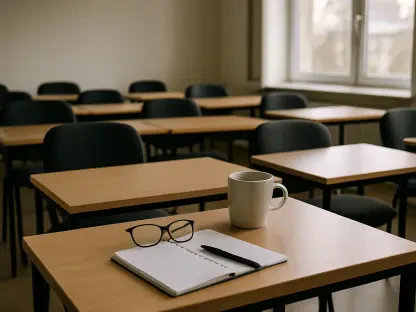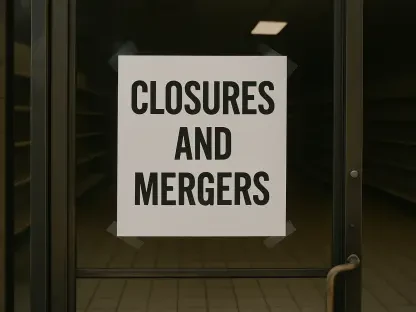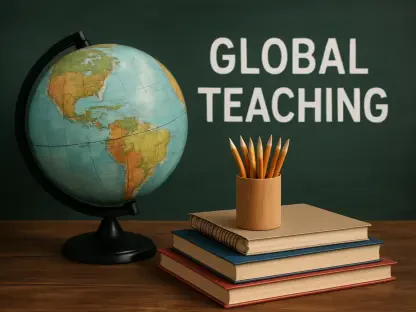As the academic world continues to recover from the seismic shifts caused by the COVID-19 pandemic, the Princeton University Class of 2029 emerges as a fascinating case study, being the first cohort to complete all four years of high school in-person after the global health crisis. Unlike their predecessors, who navigated significant portions of high school through virtual platforms, these students experienced pandemic disruptions only during their middle school years. This distinction sparks intriguing questions about whether an uninterrupted high school journey has equipped them with unique advantages or perhaps subtle disadvantages as they transition to college. Exploring their academic preparedness, social development, classroom engagement, technological challenges, and the broader institutional context reveals a nuanced picture of how post-pandemic education shapes young minds entering higher education.
Unpacking Academic Readiness
The academic foundation of the Class of 2029 is a subject of much debate among students and educators at Princeton. Many first-year students express a sense of confidence, attributing their readiness to the consistent in-person learning environment they experienced throughout high school. This uninterrupted access to teachers and structured classroom settings is often seen as a stark contrast to the fragmented online education endured by older cohorts during critical teenage years. However, beneath this apparent advantage lies a concern that the quality of preparation may not fully align with college expectations. Reports of lenient grading practices and relaxed deadlines during high school suggest that while the setting was ideal, the academic rigor might have been diluted. This raises questions about whether the perceived edge in preparedness is as substantial as it seems or if it masks underlying gaps that could surface under the pressures of university-level work.
Delving deeper into this issue, it becomes evident that the academic landscape post-pandemic has left a mixed legacy for the Class of 2029. Some students acknowledge that while they benefited from face-to-face instruction, the softer standards in high school—perhaps a lingering effect of pandemic-era leniency—have not fully equipped them for the analytical demands and strict timelines of college courses. Faculty members have noted instances where incoming students struggle with foundational skills that might have been glossed over in high school curricula adjusted for recovery. This duality highlights a critical tension: the benefit of physical classrooms versus the potential shortfall in challenging academic expectations. As these students navigate their first semesters, the true impact of their high school experience on long-term academic success remains an evolving story, one that requires close observation over time.
Social Development in a Physical World
Social growth stands as a significant area where the Class of 2029 appears to have reaped benefits from their in-person high school years. Students frequently emphasize the importance of learning alongside peers, engaging in group projects, and participating in extracurricular activities that fostered a sense of community and collaboration. These experiences, they argue, have helped build interpersonal skills crucial for thriving in the dynamic social environment of college. Unlike upperclassmen who often recount feelings of isolation during virtual learning phases, this cohort seems to carry forward a stronger sense of connection and adaptability, shaped by years of direct interaction. Such formative experiences in high school are viewed as a cornerstone for their ability to network and engage within the university setting.
Beyond the immediate benefits, the social fabric woven during in-person high school appears to offer lasting advantages for the Class of 2029. The opportunity to navigate teenage milestones—debates in class, team sports, or even casual hallway conversations—has equipped them with a nuanced understanding of teamwork and conflict resolution, skills less accessible through a screen. This contrasts sharply with accounts from older students who missed these interactions during pivotal developmental years, often leading to a sense of disconnection that persisted into college. For the Class of 2029, the physical classroom wasn’t merely a place for academics; it was a vital arena for personal growth. As they integrate into campus life, this social grounding may provide a subtle yet powerful edge in forming relationships and contributing to university communities.
Engagement in the College Classroom
Turning to classroom dynamics, the Class of 2029 presents a varied picture as observed by Princeton faculty. Some professors describe this group as quieter and less inclined to participate actively compared to previous cohorts, an unexpected trait given their uninterrupted high school experience. This reticence might stem from individual personality differences or perhaps a shift in how engagement is perceived after years of evolving educational norms. On the other hand, certain instructors note a heightened focus among these students, possibly linked to a reduced dependency on digital devices for note-taking, allowing for more direct interaction with course material. These conflicting observations suggest that the impact of an in-person high school background on college engagement is far from uniform.
Further exploration of faculty feedback reveals that course-specific factors often overshadow any broad cohort trends for the Class of 2029. Instructors who adapt teaching methods to encourage dialogue or hands-on learning report no significant differences between this class and earlier ones, indicating that pedagogical approaches might play a more decisive role than high school history. Meanwhile, subjects requiring heavy discussion or debate sometimes expose a hesitancy among these students to voice opinions, a trait not universally linked to their educational past but notable nonetheless. This mixed bag of engagement patterns underscores the complexity of attributing college behavior solely to high school experiences. Instead, it points to a blend of individual student traits and evolving classroom strategies shaping how this cohort interacts with higher education.
Navigating the Technological Landscape
Technology, particularly the advent of AI tools like ChatGPT during the high school tenure of the Class of 2029, introduces a modern challenge to their educational journey. These tools, widely accessible by their sophomore year, have sparked debates about academic integrity and the authenticity of student work. While some course assistants at Princeton report no noticeable decline in creativity or quality of assignments, there remains an undercurrent of concern among educators about the potential for misuse. Adjustments in grading practices, such as emphasizing completion over accuracy in some courses, reflect a broader institutional response to ensure fairness in an era where digital aids can blur ethical lines. This technological shift is reshaping the academic environment for all students, not just this specific cohort.
Moreover, the integration of advanced technology into education poses both opportunities and hurdles for the Class of 2029. Beyond AI, the reliance on digital platforms for research and collaboration—honed during middle school disruptions—has made them adept at navigating virtual tools, yet it also raises questions about over-dependence. Faculty are increasingly tasked with balancing the benefits of tech-savvy students against the need to foster independent critical thinking. This dynamic is not unique to this class but is amplified by their formative years coinciding with rapid digital advancements. As universities adapt policies and teaching methods to address these realities, the Class of 2029 finds itself at the forefront of a broader educational transformation, where technology’s role is both a powerful asset and a persistent challenge to traditional learning paradigms.
Institutional Evolution and Wider Context
Princeton University itself is undergoing a period of adjustment post-pandemic, mirroring the transitional experiences of the Class of 2029. Recent policy changes, such as the reinstatement of mandatory SAT or ACT scores for admissions starting from upcoming cycles, signal a return to pre-pandemic benchmarks. This shift parallels the cohort’s own journey back to a conventional in-person high school model, framing their college entry within a larger narrative of recovery. Such institutional decisions reflect an ongoing effort to recalibrate standards and expectations, not just for students but for the entire academic ecosystem still grappling with the pandemic’s aftershocks. The alignment of student and university transitions highlights a shared path toward normalcy.
Additionally, these broader changes at Princeton and beyond provide a critical backdrop for understanding the Class of 2029’s unique position. The university’s adaptations—ranging from revised admission criteria to updated teaching protocols—demonstrate a commitment to addressing lingering educational disparities caused by earlier disruptions. For this cohort, entering college amidst such shifts means navigating a landscape that is simultaneously familiar, due to their in-person high school years, and evolving, as institutions refine their approaches. This dual context suggests that their college experience is shaped not only by personal history but also by systemic efforts to rebuild and strengthen higher education. As both students and universities chart this course together, the long-term implications of these parallel recoveries remain a vital area for future analysis.
Reflecting on a Unique Transition
Looking back, the journey of the Class of 2029 at Princeton University unfolds as a compelling exploration of post-pandemic educational impacts. Their distinction as the first cohort to complete high school entirely in-person after the global crisis offers a glimpse into potential academic and social advantages, yet it also reveals challenges tied to relaxed high school standards and varied classroom engagement. Faculty insights paint a diverse picture, with technology and institutional shifts adding further layers of complexity to their transition. Moving forward, universities might consider tailored support programs to address preparation gaps while fostering environments that encourage active participation. Embracing adaptive teaching strategies and ethical technology use could also pave the way for maximizing this cohort’s potential, ensuring that their unique high school experience translates into sustained success in higher education.









